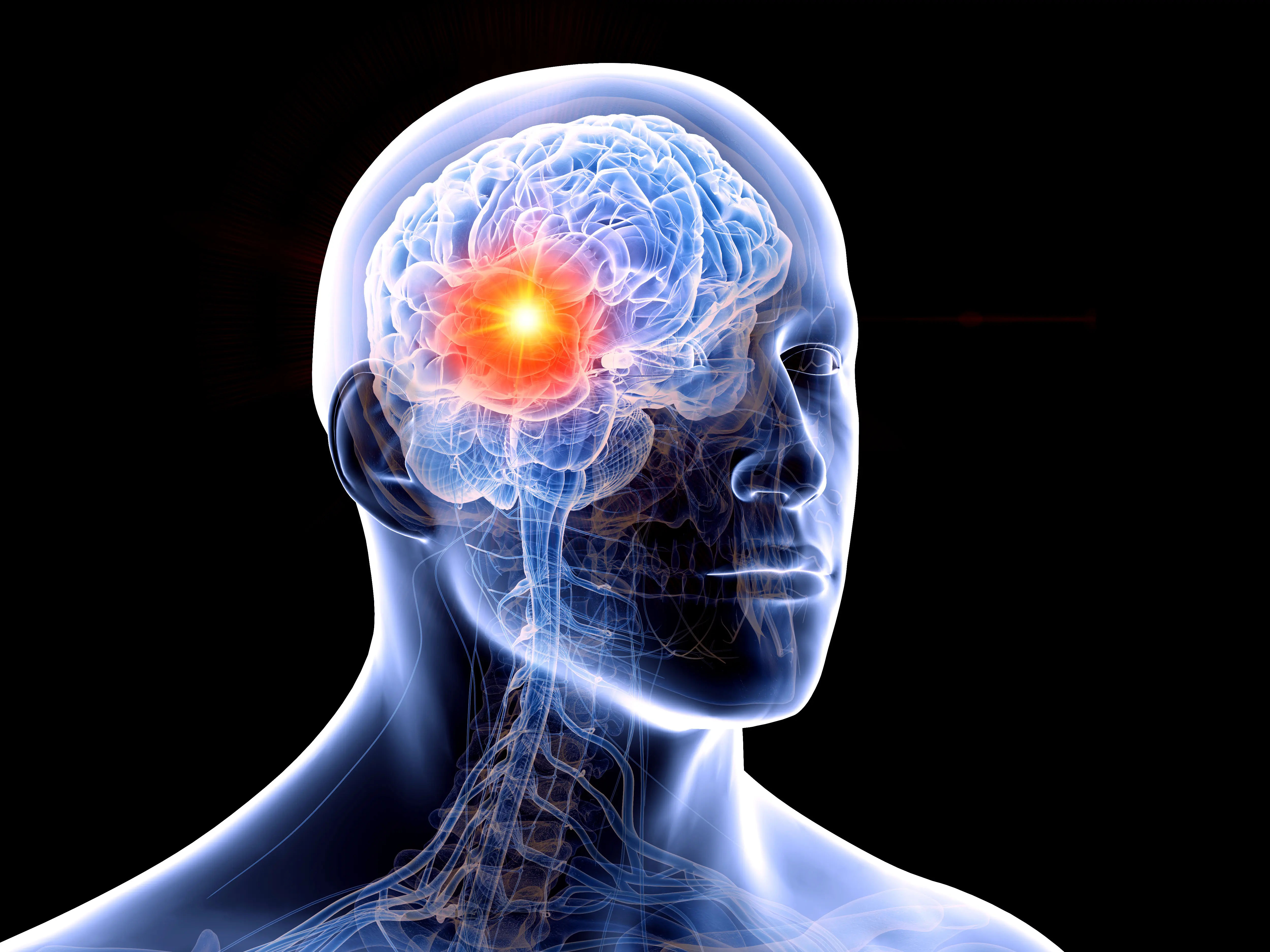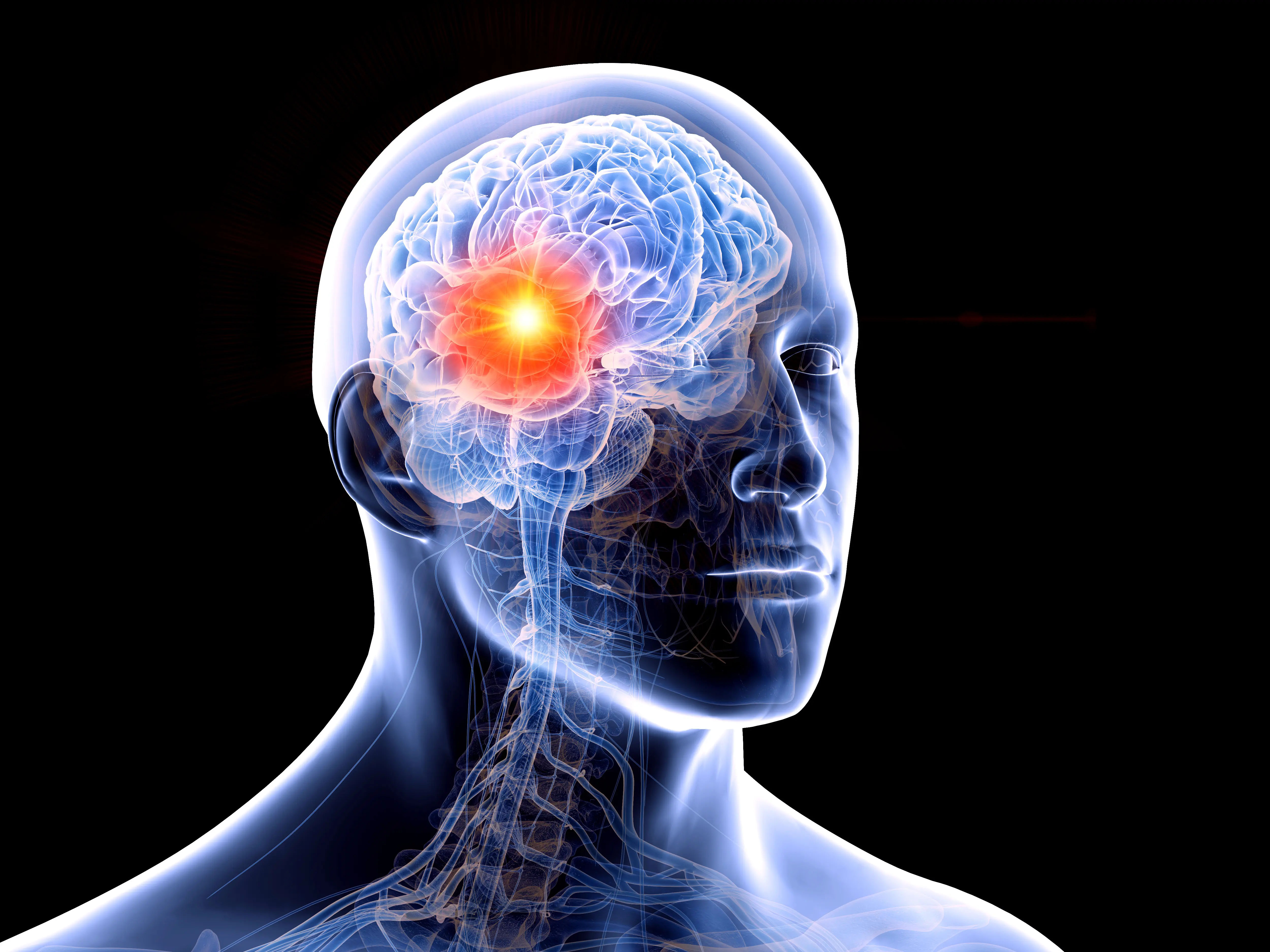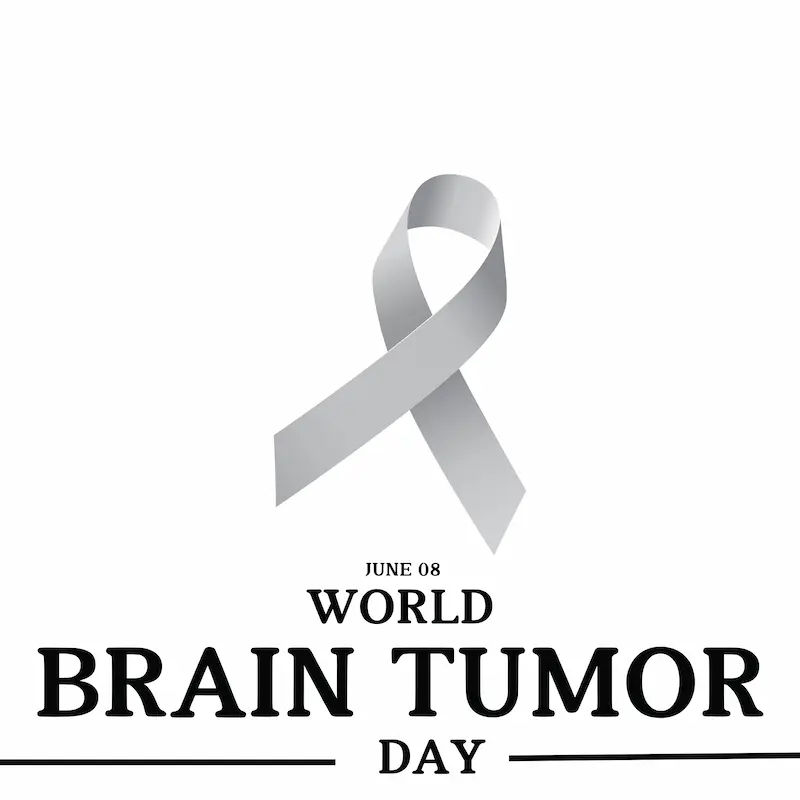Guide to Silent Signs Brain Tumor You Should Know
Don't ignore the subtle clues. Learn the silent signs of a brain tumor you should never overlook, including unexplained headaches, vision changes, and mood shifts. Get the essential guide to early detection.


Introduction
Some health changes whisper instead of shout. That’s often true for a brain tumor, where early or “silent” signs can look like everyday issues—mild headaches, fatigue, mood shifts, or clumsiness. Because the brain controls everything from movement to memory, even a small tumor can cause subtle symptoms that are easy to ignore at first. Knowing what to look for—and when to act—can make a real difference.
In this practical guide, you’ll learn how brain location shapes symptoms, which headaches raise concern, and the quiet changes in thinking, senses, and balance that deserve attention. We’ll walk through red flags, what to expect during diagnosis, and how treatment works. You’ll also get checklists, symptom-tracking tips, and questions to ask your doctor so you can take confident next steps. While most common complaints are not caused by a tumor, pattern, persistence, and progression matter. If something feels “off” and isn’t improving, it’s worth checking. If symptoms persist beyond two weeks or suddenly worsen, consult a doctor online with Apollo24|7 for further evaluation.
What “Silent” Really Means for Brain Tumors?
Brain tumors aren’t always dramatic. Many grow slowly, nudging or irritating nearby brain tissue over months to years. The result can be small changes—a slight word-finding pause, a slowly worsening headache, or an unexplained fall—that don’t immediately scream “neurology.” This is what people mean by “silent” signs: subtle, progressive changes you might chalk up to stress, aging, or poor sleep.
Two processes explain why. First, mass effect: as a tumor grows, it may raise pressure in the skull, producing headaches, nausea, or vomiting, especially in the morning or when coughing or bending. Second, location effect: different brain areas control specific functions. A tiny tumor in the frontal lobe might affect planning or personality before it ever causes pain, while a small lesion near visual pathways might cause intermittent double vision or blank spots in your field of view. Because the brain adapts, early changes are often brushed off.
- A key pattern across sources is progression: symptoms tend to steadily worsen, cluster, or become more frequent over time.That’s different from the up-and-down course of migraines or tension headaches. Bottom line: subtle does not mean trivial. Persistent or progressive changes—especially new neurological symptoms in adults without a prior history—warrant medical attention.
Consult a Top General Physician
How Brain Location Shapes Silent Symptoms?
Frontal lobe: personality, planning, and apathy
The frontal lobes govern executive functions: planning, motivation, impulse control, and social behavior. A tumor here may show up as apathy, irritability, poor judgment, or “not seeming like themselves,” sometimes long before physical symptoms. People might struggle to complete complex tasks or switch between tasks. These changes are easy to mislabel as depression or burnout.
Temporal lobe: memory, language, déjà vu
Temporal lobe tumors can affect short-term memory, comprehension, and naming objects. Some people experience brief, stereotyped spells—déjà vu, sudden fear, a rising stomach sensation, or odd smells—that represent focal seizures. Language problems (especially naming) are common if the dominant hemisphere is involved.
Occipital and optic pathways: visual blind spots and double vision
Lesions affecting the occipital lobe or optic pathways may cause partial visual field loss, blurriness, or double vision, often noticed first while reading or driving. Pituitary tumors can compress the optic chiasm, leading to loss of side vision in both eyes (bitemporal hemianopia) .
Cerebellum and brainstem: balance, coordination, and swallowing
The cerebellum coordinates movement and balance. Tumors here can cause clumsiness, wide-based gait, tremor, or difficulty with fine motor tasks like buttoning a shirt. Brainstem involvement may affect swallowing, facial muscles, or eye movements—subtle changes that progress over time.
Pituitary/hypothalamus: hormones, sleep, and temperature
Pituitary adenomas are often benign but can cause silent systemic changes: menstrual irregularities, infertility, galactorrhea (milk production), erectile dysfunction, fatigue, or unexplained weight changes. Hypothalamic involvement can alter sleep-wake cycles or appetite. These tumors may also cause headaches or gradual vision changes. If you notice persistent hormonal changes without a clear cause, discuss endocrine testing; Apollo24|7 offers convenient home collection for tests like thyroid profile, prolactin, and cortisol when advised.
Long-tail terms naturally included: frontal lobe tumor personality changes, brain tumor eye symptoms.
Headaches and Other “Everyday” Symptoms You Might Overlook
Headache patterns are more suggestive of a tumor
Most headaches are not caused by a tumor. Red flags arise when headaches are new or changing, becoming more frequent or severe over weeks; worse in the morning or with coughing/straining; or accompanied by neurological symptoms like weakness, confusion, or visual changes. A “brain tumor headache vs migraine” rule of thumb: migraines tend to be episodic with triggers, light/sound sensitivity, and relief between episodes. Tumor-related headaches often gradually worsen and may come with nausea, vomiting, or neurological deficits.
Nausea and vomiting without a clear stomach cause
Raised intracranial pressure can trigger nausea or vomiting, sometimes in the morning or without much nausea beforehand. If you repeatedly vomit in the morning or with coughing/straining and have headaches or vision changes, seek care promptly.
Fatigue and sleep changes that persist
Chronic fatigue, fragmented sleep, or daytime sleepiness can be nonspecific, but in combination with other signs—apathy, memory slips, or new snoring from brainstem involvement—they warrant evaluation. Symptoms that steadily intensify over weeks should not be ignored.
- Unique insight: Track severity over time using a 0–10 scale for pain and note triggers (coughing, bending), time of day (worse on waking), and co-symptoms (vision, weakness). A pattern of “worse in the morning plus nausea” is more concerning than isolated tension-type headaches.
- Long-tail terms: when to see a doctor for headache, signs of increased intracranial pressure.
Quiet Changes in Thinking, Mood, and Senses
Memory lapses, decision-making, and personality shifts
Subtle cognitive changes often precede physical signs—taking longer to complete familiar tasks, paying bills late, or difficulty multitasking. Family may notice personality changes first: irritability, apathy, or risky decisions. These are classic for frontal or temporal lobe lesions. If cognitive changes are progressive rather than intermittent and you’re under 65, do not assume it’s just aging.
Changes in vision, hearing, smell, or taste
- Vision: double vision, loss of side vision, or unexplained visual “holes” are key clues, especially with pituitary or occipital involvement.
- Hearing: gradual hearing loss in one ear or constant ringing (tinnitus) may point to a tumor along the hearing nerve (acoustic neuroma/vestibular schwannoma).
- Smell and taste: reduced smell (anosmia) or odd phantom smells can accompany temporal lobe seizures or frontal base tumors.
Speech and language: word-finding pauses and slurred speech
Trouble retrieving words, stumbling over names, or slurred speech that worsens with fatigue could suggest dominant hemisphere temporal or frontal involvement. Unlike stroke, which is sudden, tumor-related language changes often accumulate gradually.
- Unique insight: Ask someone you trust whether they’ve noticed changes in your mood, focus, or communication. A loved one’s perspective can reveal patterns you may overlook.
Movement, Balance, Weakness—and Seizures
Clumsiness, falls, and fine motor issues
Cerebellar lesions can cause a wide-based, unsteady gait, difficulty walking heel-to-toe, or trouble with precise hand tasks. You might notice more typos, dropping utensils, or shaky handwriting. These are subtle “silent” clues when they persist or worsen.
Weakness or numbness on one side
Slowly progressive weakness, heaviness, or numbness affecting one side of the body (face, arm, leg) can indicate a lesion in the opposite cerebral hemisphere. Watch for difficulty turning keys, brushing hair, or a foot catching on the ground. Unlike neuropathy, which often starts in the feet and is symmetrical, tumor-related deficits are usually focal and unilateral.
Seizures: the first sign in many adults
About one-third of adults with a brain tumor experience a seizure at some point; for many, it’s the first symptom. Focal seizures can be subtle—brief staring spells, odd smells, or rhythmic jerking in one limb without loss of awareness. Any first seizure merits urgent evaluation and brain imaging.
- Unique insight: If you’ve had a first seizure, avoid driving and operating machinery until cleared by a clinician. Anti-seizure medications may be started even before a final diagnosis to reduce risk.
Children, Teens, and Older Adults: Different Silent Signs
Infants and young children
In infants, skull sutures are not yet fused, so increased pressure may cause a rapidly growing head size (macrocephaly), irritability, poor feeding, or developmental delays. Vomiting without diarrhea and persistent morning headaches in toddlers/young children are red flags [3][8].
School-age children and teens
Look for declining school performance, new clumsiness in sports, behavior changes, persistent headaches with early-morning vomiting, vision problems, or delayed puberty. Many pediatric tumors occur in the posterior fossa (cerebellum/brainstem), presenting with balance issues and headache.
Older adults
In older adults, subtle cognitive or mood changes are often misattributed to “normal aging.” New-onset seizures, stepwise cognitive decline, or gait instability warrant evaluation, particularly if vascular risk factors are present. Certain tumor types (e.g., meningiomas) are more common in this age group and can grow silently for years.
- Unique insight: For children and older adults, caregiver observations are crucial. Keep a written log of changes, including dates and specific examples, to share with the clinician.
When to Seek Help and What Diagnosis Involves?
Red flags that should never be ignored
- New or worsening headaches over weeks, especially morning headaches or those with coughing/straining
- First seizure or recurrent “spells”
- Progressive weakness, numbness, or balance problems
- Persistent double vision or loss of side vision
- Personality or cognitive changes that are getting worse
- Persistent vomiting without a clear gastrointestinal cause
If any of these occur, seek medical care promptly. If symptoms persist beyond two weeks, consult a doctor online with Apollo24|7 for further evaluation, or book a physical visit if symptoms are worsening.
The medical evaluation: history and neurological exam
Your clinician will ask about the onset, progression, triggers, and associated symptoms, and perform a focused neurological exam (vision, eye movements, strength, reflexes, sensation, coordination, gait). They’ll look for focal deficits or signs of raised intracranial pressure (papilledema).
Imaging and tests: MRI, CT, EEG, and labs
- MRI with and without contrast is the preferred imaging to characterize a suspected brain tumor .
- CT can be used initially, especially in emergency settings or when MRI is not available.
- EEG may be ordered after a seizure to look for abnormal brain activity.
- Blood tests may assess endocrine function (pituitary tumors), inflammation, or rule out mimics.
- When advised, Apollo24|7 offers home sample collection for hormone panels like prolactin, thyroid profile, cortisol, and other lab tests.
Biopsy and tumor typing
Definitive diagnosis often requires a biopsy to determine tumor type and grade. This guides treatment options and prognosis. Newer molecular markers (e.g., IDH, 1p/19q codeletion) help personalize therapy.
- Unique insight: Ask whether your MRI should include high-resolution pituitary sequences if you have hormonal or visual field symptoms. This small adjustment can be pivotal.
Treatment at a Glance—and Why Earlier Detection Helps
Surgery and modern navigation tools
When feasible, surgery aims to remove as much tumor as safely possible. Techniques like neuronavigation, intraoperative MRI, and awake mapping improve precision, reducing deficits while maximizing tumor removal. Steroids may be used to reduce swelling before and after surgery.
Radiation, chemotherapy, and targeted therapies
Radiation therapy (external beam, stereotactic radiosurgery) is often used after surgery or when surgery isn’t possible. Chemotherapy agents like temozolomide are standard for some gliomas; targeted therapies and tumor-treating fields may be options depending on tumor type and molecular features. Anti-seizure medications are used if seizures occur.
Outcomes, rehabilitation, and follow-up
Earlier detection can enable safer surgery, fewer complications, and better functional outcomes. Rehabilitation (physical, occupational, speech therapy) helps restore function. Regular MRIs track for recurrence or progression. Survivorship care includes cognitive support, endocrine monitoring, and mental health resources.
- Unique insight: Even “benign” tumors can be dangerous based on location. Goals of care often balance time, function, and quality of life—not just tumor size.
What Else Could It Be? Common Look-Alikes
Migraine and tension headaches vs. tumor headaches
Migraines often have triggers (lack of sleep, certain foods), throbbing pain, sensitivity to light/sound, nausea, and are episodic. Tension headaches are band-like and stress-related. Tumor-related headaches tend to be progressive and may pair with neurological deficits or morning nausea. If your “usual” headache changes character or pattern, get checked.
Inner ear problems and acoustic neuroma
Benign vestibular disorders cause vertigo, imbalance, and sometimes hearing loss. Acoustic neuromas specifically cause gradual one-sided hearing loss and imbalance. Audiometry and MRI of the internal auditory canals can clarify.
Stroke/TIA vs. subacute tumor symptoms
Stroke is usually sudden, with maximum symptoms at onset; tumors more often progress over weeks. But some tumors bleed or cause sudden deficits. Any sudden weakness, facial droop, or speech trouble is an emergency—call local emergency services.
Anxiety, depression, and sleep disorders
These can mimic or coexist with tumor symptoms. The difference is progression and focal neurological signs. If mood/anxiety symptoms are new, persistent, and coupled with focal deficits (vision loss, weakness, seizures), seek neurological evaluation.
- Unique insight: You don’t need to self-diagnose. Your role is to notice patterns and persistence; your clinician’s role is to test and rule in/out causes.
Taking Action: Tracking, Preparing, and Getting Support
Build a symptom diary (with examples)
Use a simple grid:
- Date/time; symptom; severity (0–10); duration; triggers (e.g., coughing, bending); associated signs (vision, weakness, nausea)
- Example: “Sept 12, 7 am—headache 7/10; worse on waking; vomited once; improved by noon; brief double vision while reading.”
- Bring this to your appointment—it speeds diagnosis.
Questions to ask your doctor
- Which symptoms concern you most and why?
- Do I need an MRI with contrast? Should we include pituitary or internal auditory canal views?
- What could this be if it’s not a tumor?
- If a tumor is found, what are the next steps and timelines?
- Which symptoms mean I should go to the emergency department?
Trusted resources and support communities
- The National Brain Tumor Society and the American Brain Tumor Association offer guides and support groups.
- Hospital social workers can connect you to local services.
If your condition does not improve after trying initial measures, book a physical visit to a doctor with Apollo24|7. They can also coordinate referrals and imaging.
- Unique insight: Bring a family member or friend to appointments; they can share observations and help you remember details and next steps.
Conclusion
Subtle doesn’t mean insignificant—especially when it comes to the brain. A tumor can whisper before it ever shouts, showing up as a new morning headache, a slow change in mood or memory, a stumble, or a momentary visual glitch. Most common complaints are not caused by a tumor, but patterns tell a story: persistence, progression, and combinations of neurological changes deserve attention. Understanding how brain location shapes silent symptoms helps you connect the dots and act sooner.
If you recognize concerning patterns—new or worsening headaches, first-time seizures, visual changes, focal weakness, or steadily changing personality—don’t wait. Start a symptom diary, talk with someone close to you, and schedule an evaluation. If symptoms persist beyond two weeks or rapidly worsen, consult a doctor online with Apollo24|7 for guidance on next steps, including whether you need an MRI or specialist referral. For hormonal or pituitary-related concerns, Apollo24|7’s home collection makes targeted lab testing easier when recommended.
Consult a Top General Physician
Consult a Top General Physician

Dr. Siri Nallapu
General Practitioner
5 Years • MBBS
Hyderabad
Apollo 24|7 Clinic, Hyderabad

Dr Divya Lekha Gunta
General Practitioner
10 Years • MBBS, MD (Pathology)
Visakhapatnam
Apollo 24|7 Clinic - Andhra Pradesh, Visakhapatnam

Dr. Rajib Ghose
General Physician/ Internal Medicine Specialist
25 Years • MBBS
East Midnapore
VIVEKANANDA SEBA SADAN, East Midnapore

Dr. Santanu Mandal
General Physician/ Internal Medicine Specialist
17 Years • MD (Physician), DNB (General Medicine)
Kolkata
MCR SUPER SPECIALITY POLY CLINIC & PATHOLOGY, Kolkata
(25+ Patients)

Dr. Moumita Roy
General Physician/ Internal Medicine Specialist
8 Years • MBBS , MD (Anesthesiology)
Kolkata
VDC Clinic, Kolkata
Consult a Top General Physician

Dr. Siri Nallapu
General Practitioner
5 Years • MBBS
Hyderabad
Apollo 24|7 Clinic, Hyderabad

Dr Divya Lekha Gunta
General Practitioner
10 Years • MBBS, MD (Pathology)
Visakhapatnam
Apollo 24|7 Clinic - Andhra Pradesh, Visakhapatnam

Dr. Rajib Ghose
General Physician/ Internal Medicine Specialist
25 Years • MBBS
East Midnapore
VIVEKANANDA SEBA SADAN, East Midnapore

Dr. Santanu Mandal
General Physician/ Internal Medicine Specialist
17 Years • MD (Physician), DNB (General Medicine)
Kolkata
MCR SUPER SPECIALITY POLY CLINIC & PATHOLOGY, Kolkata
(25+ Patients)

Dr. Moumita Roy
General Physician/ Internal Medicine Specialist
8 Years • MBBS , MD (Anesthesiology)
Kolkata
VDC Clinic, Kolkata
More articles from Brain Tumor
Frequently Asked Questions
Are headaches the main sign of a brain tumor?
Not always. Many people with brain tumors have headaches, but others first notice vision changes, seizures, personality shifts, or balance problems. A brain tumor headache vs migraine is more likely to be new, progressive, worse in the morning or with coughing, and paired with neurological changes.
What are subtle brain tumor symptoms in adults?
Subtle brain tumor symptoms include word-finding pauses, one-sided hearing loss, frequent déjà vu (focal seizures), mild clumsiness, or progressive apathy. Persistence and progression over weeks are key clues.
When should I get an MRI for headaches?
Consider imaging if headaches are new and worsening over weeks, wake you from sleep, are worse on waking or straining, or are accompanied by red flags like seizures, vision loss, weakness, or cognitive changes. MRI with contrast is usually preferred. If unsure, consult a doctor online with Apollo24|7 to triage your symptoms.
Can hormone changes be a sign of a brain tumor?
Yes. Pituitary tumors can cause menstrual irregularities, infertility, galactorrhea, erectile dysfunction, fatigue, and vision changes (loss of side vision). Your doctor may order hormone tests; Apollo24|7 offers home collection for panels like prolactin, thyroid, and cortisol when advised.
What’s the difference between stroke and brain tumor symptoms?
Stroke usually causes sudden symptoms at maximum intensity (e.g., sudden weakness, speech trouble). Tumor symptoms more often develop gradually over weeks. However, some tumors can bleed and present suddenly. Any abrupt neurological deficit is an emergency—seek immediate care.




